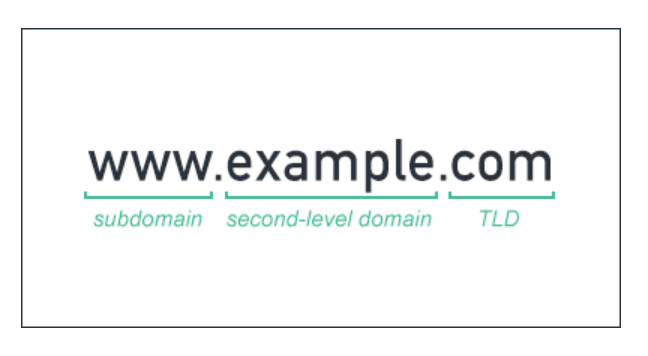
Everyone knows that it’s important for your website’s URL and domain name to align with your brand, and that a customer should be able to easily associate your chosen domain name with your company. Customers searching for your target keywords or your brand in search engines, such as Google, rely on the search engine’s ranking to help them make a click-through decision. With this in mind, how does your choice domain name impact your overall success in the search engine results pages (SERPs)?
There are a few key rules to finding a domain name that can assist in your search engine rankings. It’s important to remember that your domain name is not the end-all-be-all of SEO and that your website still needs to have the proper content and on-page SEO techniques implemented to contribute to the overall ranking as well. Below we list the ways your domain name does and does not contribute to SEO and how to ensure it will positively impact your search results.
There are three main parts to your website name:

Subdomain
The subdomain, or the portion of your domain prior to the main domain name, has spurred much debate amongst SEO specialists in terms of how it contributes to success in search. Subdomains, as you’ve likely seen, are often used for blogs, such as having a blog.companywebsite.com. Best practices in domain naming indicate that website owners should not run their blog or similar content off subdomains, but rather off of subfolders (website.com/blog versus blog.website.com). Google does claim that your success in search is not impacted by your use of a subdomain versus a subfolder. Google may see a subdomain as a separate website, but is intelligent enough to understand that the subdomain is related to your main website or a different part of the same website. There has been debate and a test completed by Moz that proved subdomains do not fare as well as subfolders in search, however, subdomains are a great resource for short-lived marketing campaigns or landing pages and should not be discounted altogether.
Second-Level Domain
Choosing a memorable Second-Level Domain is important, not only for SEO, but for brand association. Your website name should be easy to remember and simple to share. If you struggle to pronounce it, or often find yourself spelling it out, that is typically a good indication that you should alter it. Often, shorter domain names drive traffic more than hyphenated sentences. For example, if you are trying to rank for cheapest flight prices and your company is FlyNow, you’re better off having a flynow.com domain, than a cheap-flight-prices.com, domain name. Despite the fact that the hyphenated name hits keyword targets, your brand name is far more important, and you can embed these keywords on your on-page SEO and content strategy.
If you have products specific to your brand, having the product name redirect to a landing page about the product or the store section of your website to purchase the product is great for the customer journey.
Many companies go the extra length and invest in not only their company name, but also their product names that are popular, and their tagline as a domain. If you have products specific to your brand, having the product name redirect to a landing page about the product or the store section of your website to purchase the product is great for the customer journey. Aside from the aforementioned benefits, buying related domains prevents spoof websites popping up that could be damaging to your brand, and also increases your appearance in search. If a customer can’t remember your company name, but maybe your tagline jingle from a radio ad, they can type it into Google, and the URL with the tagline can simply redirect to your main website.
Top-Level-Domain
Your Top-Level-Domain is your domain extension, such as a .COM. It is often recommended to have a Generic Top-Level Domain (gTLD) or a Country Code Top-Level-Domain (ccTLD) for the purposes of targeting and driving traffic. Customers using search engines are prone to trusting generic domains, as they are familiar. However, there are hundreds of TLDs available to the public, and they’re a great way to hit target keywords and inform the user of what you offer.
Taking advantage of unique TLDs, even if they redirect to your .COM domain name, is a great way to appear in searches.
An interesting way to tell those who are searching for what your business offers is to use a TLD that stands out. If you specifically sell art or photos, having a .ART domain or .PHOTO domain, provides customers the information they’re looking for prior to clicking. Having a .STORE, for example, or a .SHOP, includes a keyword in your TLD, while also telling the customer that they can purchase what they’re looking for through your website. Taking advantage of unique TLDs, even if they redirect to your .COM domain name, is a great way to appear in searches.
Bonus Fact!
The part prior to the subdomain, also known as the protocol, or you may recognize as HTTP, also has an impact on your SEO. Google and other web browsers are working together to encourage everyone to have an HTTPS website to ensure better security of the web overall. HTTPS websites will rank higher than HTTP ones. It is simply good practice to have your website secure, especially if you are having customers enter personally identifying information (such as their email, credit card, mailing address and more). Having an SSL certificate is important for your online store, and will benefit your website in search rankings.
Have any other questions about domain names? Ask them in the comments!











